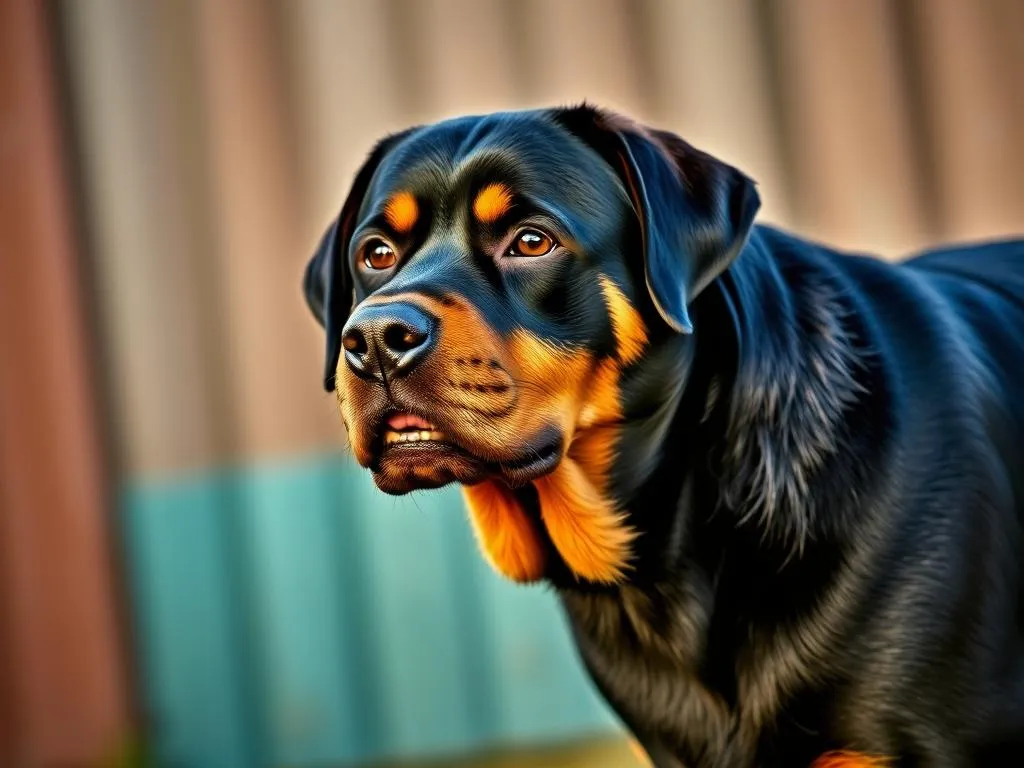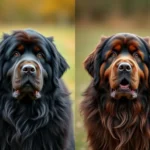
Introduction
The Rottweiler is a powerful and versatile breed known for its strength, loyalty, and protective instincts. This breed has garnered a reputation as both a loving family companion and an effective working dog. Understanding the types of Rottweiler is crucial for potential owners, as each type comes with its distinct characteristics, traits, and suitability for various lifestyles.
History of the Rottweiler
Origins of the Rottweiler
The history of the Rottweiler can be traced back to ancient Rome, where they were used as herding dogs and guard dogs. Their ancestors, the Roman drover dogs, accompanied Roman soldiers and helped herd cattle, providing vital support during military campaigns. The breed flourished in the town of Rottweil, Germany, where they were known for their strong work ethic and protective nature. Over time, Rottweilers evolved from working dogs to popular companions, making their mark in various roles.
Rottweiler in Modern Times
Today, Rottweilers are widely recognized and appreciated for their versatility. They serve in multiple capacities, including police work, search and rescue, and as service animals. Various kennel clubs and organizations have recognized the breed, ensuring that they adhere to established standards. This recognition has further solidified their status as a beloved breed among dog enthusiasts.
General Characteristics of Rottweilers
Physical Traits
Rottweilers are robust and muscular dogs, typically weighing between 80 to 135 pounds, with males generally larger than females. Their height ranges from 22 to 27 inches at the shoulder. The coat of a Rottweiler is short, dense, and water-resistant, primarily black with distinct tan markings on the face, chest, and legs. This striking appearance, combined with their imposing stature, makes them easily recognizable.
Temperament
The personality of a Rottweiler is one of their most appealing traits. They are confident, loyal, and intelligent. Rottweilers are known to be protective of their families, making them excellent guard dogs. While they can be reserved with strangers, they are generally affectionate with family members, including children and other pets. Proper socialization from a young age is crucial to ensure they develop into well-rounded adult dogs.
Types of Rottweilers
American Rottweiler
The American Rottweiler is characterized by its slightly different physical traits and temperament compared to its European counterparts. These dogs tend to be taller and leaner, with a more refined appearance. They may also exhibit a more outgoing personality, making them popular as family pets. However, American Rottweilers can be prone to certain health issues, such as hip dysplasia and heart conditions, which are essential considerations for prospective owners.
Ideal living conditions for American Rottweilers include space for exercise and interaction with their families. They thrive in environments that provide ample opportunities for socialization and training, ensuring they remain balanced and well-adjusted.
German Rottweiler
The German Rottweiler is often considered the breed’s standard. These dogs are bred to adhere to strict guidelines, focusing on maintaining the breed’s working capabilities and temperament. German Rottweilers are typically more robust and have a thicker bone structure than their American counterparts. Their breeding standards emphasize health, temperament, and working ability, making them excellent choices for those seeking a loyal and capable companion.
In terms of working roles, German Rottweilers excel in various capacities, including protection work and obedience training. Their strong lineage and adherence to breeding standards often lead to fewer health issues compared to other types.
Canadian Rottweiler
The Canadian Rottweiler shares similarities with both American and German Rottweilers but has its unique traits. Canadian breeders often focus on producing dogs that align with the Rottweiler breed standard while considering the temperament that suits Canadian lifestyles. These dogs may exhibit a more laid-back demeanor, making them suitable for families who prefer a calmer companion.
In terms of appearance, Canadian Rottweilers may have slight variations in size and coat texture, but they still retain the breed’s hallmark characteristics. Owners should be aware that training and socialization are vital for their development, as some Canadian Rottweilers can be more prone to shyness.
European Rottweiler
The European Rottweiler is bred to meet the standards set by European kennel clubs, which often emphasize working ability and breed integrity. These dogs are typically more muscular and robust, showcasing traits that make them exceptional working dogs. The European Rottweiler tends to be more serious and focused, making them excellent candidates for roles in protection and service work.
When comparing European Rottweilers to American varieties, it’s essential to note that European dogs often have a more pronounced instinct to work and protect, which can influence their training and socialization needs. Their temperament may also be more protective, making it crucial for owners to invest time and effort into proper training.
Working Line Rottweiler
The Working Line Rottweiler is specifically bred for performance in various working capacities. These dogs are often utilized in law enforcement, search and rescue operations, and protection work. Their breeding focuses on traits such as drive, stamina, and intelligence, making them ideal for tasks requiring high levels of focus and energy.
Working line Rottweilers typically exhibit a more intense temperament, requiring experienced handlers who can provide the necessary training and socialization. These dogs thrive in environments where they can engage in physically and mentally stimulating activities.
Show Line Rottweiler
The Show Line Rottweiler is bred with a focus on conformation to breed standards for dog shows. These dogs often have a more refined appearance, with specific physical traits emphasized for competition. While they may still possess the breed’s protective instincts, show line Rottweilers may be less driven and more approachable than their working counterparts.
Training and socialization for show line Rottweilers should also be tailored to their unique needs. They may require different approaches to training, as their temperament can vary from the more intense working lines. Ensuring these dogs receive adequate socialization is crucial for their development.
Choosing the Right Type of Rottweiler
Factors to Consider
When selecting the right type of Rottweiler for your lifestyle, several factors should be considered. These include your activity level, experience with dog ownership, and the purpose of getting a Rottweiler. For active individuals or families, a Working Line Rottweiler may be ideal, while those seeking a family companion might prefer an American or Canadian Rottweiler.
Breeder Selection
Choosing a reputable breeder is essential when looking for a specific type of Rottweiler. It’s important to ask questions regarding the breeding practices, health testing, and temperament of the puppies. A responsible breeder will be happy to provide documentation and information about the types of Rottweilers they produce.
Caring for Rottweilers
Training and Socialization
Training and socialization are critical components of raising a well-adjusted Rottweiler, regardless of type. Early socialization helps Rottweilers become comfortable in various environments, reducing the likelihood of behavioral issues. Positive reinforcement training methods are highly recommended, as they foster a strong bond between the dog and owner.
Health and Nutrition
Rottweilers are prone to specific health issues, including hip and elbow dysplasia, heart conditions, and certain cancers. Regular veterinary check-ups and a healthy diet are essential for maintaining their well-being. Nutritional needs may vary depending on the type of Rottweiler; for instance, Working Line Rottweilers may require higher protein diets to support their active lifestyles.
Exercise Requirements
Rottweilers are an active breed that requires regular exercise to maintain their health and happiness. Daily walks, playtime, and mental stimulation are essential for all types of Rottweilers. Engaging in activities such as obedience training, agility, or even protection sports can provide the necessary physical and mental challenges these dogs crave.
Conclusion
Understanding the types of Rottweiler is essential for prospective owners to make informed decisions about which breed fits their lifestyle. Each type exhibits unique characteristics, allowing potential owners to choose one that aligns best with their preferences and living conditions. Being aware of the responsibilities of ownership, including training, health care, and socialization, is crucial in ensuring a happy and fulfilling life for both the dog and the owner.









